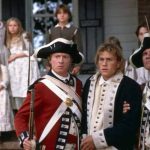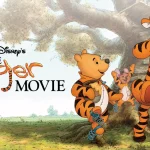Into the Wild (2007)

Suggested videos for you: [Movie Review] Blitz (2011)
Suggested videos for you: [Movie Review] San Andreas (2015)
Suggested videos for you: [Movie Review] Survive 2024: Waking to a Dry Ocean – A Signal of the Coming Apocalypse
Suggested videos for you: [ Movie Review ] The Terrifying Birth of an Alien-Human Hybrid: A Sci-Fi Horror Unleashed!
Into the Wild (2007), directed by Sean Penn and based on Jon Krakauer’s 1996 non-fiction book, tells the true story of Christopher McCandless, a young man who abandons his conventional life in search of freedom and meaning in the wilderness. This film is both a breathtaking adventure and a profound meditation on self-discovery, the rejection of materialism, and the pursuit of spiritual fulfillment.
Plot Summary:
The movie chronicles the journey of Christopher McCandless (played by Emile Hirsch), a recent college graduate from a wealthy family, who becomes disillusioned with society’s expectations and materialism. Renaming himself Alexander Supertramp, he donates his life savings to charity, cuts ties with his family, and embarks on a cross-country journey, hitchhiking through the American West. His ultimate goal: to live in the Alaskan wilderness and find true freedom.
Through flashbacks, the film reveals Christopher’s troubled relationship with his parents (Marcia Gay Harden and William Hurt) and his growing disdain for their privileged but emotionally distant lifestyle. Along his journey, he meets a series of people who impact him profoundly, including Jan and Rainey (Catherine Keener and Brian H. Dierker), a hippie couple, and Ron Franz (Hal Holbrook), an elderly man who forms a deep bond with Christopher and offers him a home.
After months of exploration and soul-searching, Christopher finally reaches the wilds of Alaska. However, his dream of self-sufficiency in nature leads to unexpected challenges, forcing him to confront the harsh realities of isolation and survival.![Phim cũ mà hay] Into the Wild: Hạnh phúc chỉ có thực khi được chia sẻ](https://s3.cloud.cmctelecom.vn/tinhte1/2015/01/2774753_into-the-wild_7.jpg)
Review:
Strengths:
- Emile Hirsch’s Performance: Hirsch delivers a career-defining performance as McCandless, capturing both his idealism and his internal struggles. His physical and emotional transformation throughout the film is gripping, making the audience empathize with his journey, even when his decisions seem misguided.
- Direction and Cinematography: Sean Penn’s direction brings the American landscape to life, with cinematographer Eric Gautier capturing the natural beauty of the wilderness. The sweeping shots of deserts, rivers, mountains, and forests are breathtaking, emphasizing the allure of the wild and the sense of adventure McCandless seeks. Nature is portrayed both as majestic and unforgiving, reflecting the duality of Christopher’s quest for freedom.
- Themes of Freedom and Isolation: Into the Wild explores timeless themes of personal freedom, the rejection of societal norms, and the human desire to connect with nature. Christopher’s rejection of material wealth and his longing for an authentic life resonate with many viewers. However, the film also reveals the loneliness and danger that come with extreme individualism, as McCandless isolates himself from family and society in search of a deeper meaning.

- Supporting Cast:
- Hal Holbrook, in a heartbreaking performance, portrays Ron Franz, a lonely man who becomes emotionally attached to McCandless. His quiet vulnerability and wisdom offer a contrast to Christopher’s youthful restlessness. Holbrook’s portrayal earned him an Oscar nomination, and his scenes with Hirsch are some of the most emotionally charged in the film.
- Catherine Keener and Brian H. Dierker as the free-spirited couple Jan and Rainey are also memorable, offering warmth and a sense of community that Christopher continuously pushes away.
- Eddie Vedder’s Soundtrack: The film’s soundtrack, primarily composed by Pearl Jam’s Eddie Vedder, is haunting and soulful, perfectly complementing the film’s themes. Songs like “Guaranteed” and “Society” capture the emotional weight of Christopher’s journey and add a layer of melancholy to the film’s narrative.

Weaknesses:
- Glorification of McCandless: Some critics argue that the film romanticizes McCandless’ journey without fully addressing the recklessness of his actions. His lack of preparation for the harsh realities of the Alaskan wilderness and the impact his disappearance had on his family are sometimes overshadowed by the idealized vision of his adventure.
- Pacing: The film, while visually captivating, occasionally slows down in its middle sections. The non-linear narrative, which switches between McCandless’ Alaskan experience and his cross-country journey, can feel repetitive at times, diluting the overall impact of his transformation.
- Lack of Balance: While the film beautifully captures Christopher’s idealism and philosophy, it gives less attention to the consequences of his choices on others, especially his family. His parents are portrayed as symbols of materialism and emotional repression, but their pain and concern over his disappearance are somewhat minimized in favor of McCandless’ internal journey.
Themes and Interpretation:
Into the Wild is ultimately about the quest for meaning in an increasingly materialistic world. McCandless’s rejection of conventional life, driven by his desire for independence and spiritual purity, reflects a universal longing for authenticity. Yet, the film also raises questions about the limits of personal freedom and the dangers of isolation. In seeking to escape the artificiality of society, McCandless finds beauty but also learns that complete self-sufficiency can lead to unintended consequences.
The film’s final message, encapsulated in McCandless’ realization that “happiness is only real when shared,” serves as a poignant reminder that human connection is as vital as the pursuit of freedom.
Legacy:
Into the Wild received critical acclaim for its direction, acting, and cinematography, earning multiple award nominations. It resonated with audiences for its portrayal of a young man’s search for purpose and its depiction of the beauty and brutality of nature. The film has inspired many to reflect on their own relationship with society and nature, and McCandless’s story remains both an inspiration and a cautionary tale for those seeking a life outside the boundaries of modern civilization.
Conclusion:
Into the Wild is a visually stunning and emotionally powerful film that explores the complexities of freedom, adventure, and the human condition. While it may romanticize aspects of McCandless’ journey, it ultimately delivers a sobering message about the balance between independence and connection. Emile Hirsch’s standout performance, paired with Sean Penn’s thoughtful direction, makes it a poignant and thought-provoking exploration of one man’s search for truth in the wilderness.












